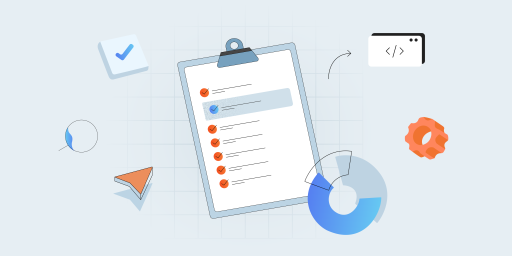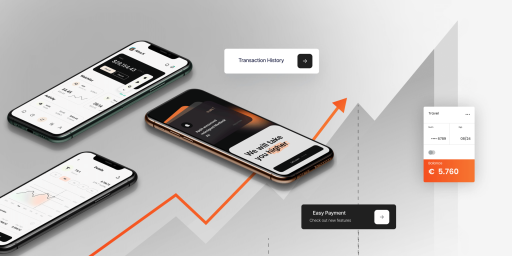Testability definition, in simple terms, is the scope of the ease/difficulty with which a system or software artifact can be tested. These artifacts include software modules, Unified Modeling Language models, requirements documents, and applications. Testability enables easy assessment and determining the overall efforts required to perform testing activities on the software, covering test duration, number of test cases, and scenarios. So, it’s an essential characteristic that should be considered at the planning and organizing testing stage.
Testability Significance
Why is testability important? The lower the testability level, the more prominent efforts will be needed to check the software. It also significantly affects the overall time and cost of testing. If testability is low, managers may decide to give up a couple of testing phases to meet the deadlines or test the final product faster, sacrificing its quality. Therefore, worse-tested applications of a lower quality are not competitive on the market.
Testing is a never-ending task that lasts as long as the software gets developed, changed, and updated according to the new tech requirements and user preferences. The new aspects of software testing can also become a bridge for efficient testability.
Main Factors of Software Testability
Two main testability factors include observability and controllability.
- Observability is the ability to detect the software components’ response to the inputs and monitor the alteration they cause to the inside state of the software. Careful observing is the basis for studying multiple behaviors and paths during testing.
- Controllability is the capacity of a tester to control every module of software separately. The controllability level is directly proportional to the testing efficiency. Moreover, control over software functionality is essential for performing any test automation.
Additional Testability Factors
Some other factors affecting testability are covered below.
- Simplicity evaluates how much effort is needed to test the software (in other words, how simple the software is to test). This factor includes functional, structural, and code simplicity combined. It’s aimed at reducing the complexity of the required feature or overall software and creating more straightforward solutions to the issues.
- Stability means the testing process is more successful if fewer changes are expected. Therefore, software should be steady enough not to require frequent alterations. A stable application version is also necessary before starting any test automation. This factor is clearly related to controllability, as any modification should be controlled.
- Availability here is all about the accessibility of the objects or entities for performing the testing, including source code, bugs, and the software itself at any stage of its development.
The Requirements for Software Testability
As mentioned before, software testability is a method of improving those features that can facilitate the test process or make it faster and more efficient. Here are the capabilities associated with software testability requirements.
Module Capabilities
Software is developed module by module, each of which will be tested separately.
Observation Capabilities
Observing the software is about monitoring the parameters’ outcomes and factors influencing them.
Testing Support Capabilities
The entry point for testing drivers and root should be saved for every member of the team, each test interface, and scenario.
Defects Disclosure Capabilities
There should be fewer or no system errors for them not to block the testing process. A requirement document should also meet the following points.
- It should be accurate, concise, complete, unique, and with the same understanding for all the staff members.
- A condition shouldn’t blend with or be contradictory to other needs.
- The priority-based ranking of requirements should be implemented.
- A condition must be domain-based, so requirement modifications won’t be hard to execute.
How to Measure Software Testability?
Software testing is the process of finding and defining possible software defects. It aims to ensure that the software meets all the requirements. Testability evaluates how easy software is to test and how likely testing will find the application’s defects. Then what is testability assessment or measurement, and how can it be done? Software testability measurement is to specify the software components of lower quality and those with less apparent defects.
Software testability assessment can be accomplished through multiple methods, the most popular of which are based on software metrics assessment, including:
- Depth Of Inheritance Tree;
- Fan Out (FOUT);
- Lack Of Cohesion Of Methods (LCOM);
- Lines Of Code per Class (LOCC);
- Response For Class (RFC);
- Weighted Methods per Class (WMC).
These actions and means analyze and estimate software testability during the whole life cycle of an application, and all of them are based on assessing the testability factors mentioned above.
When the software launch is on, it is crucial to consider which components may be more challenging to test. Their low component testability makes them more effort- and time-consuming. Therefore, the testability assessment is even more critical at the starting testing phase as it affects the efficiency of the planning process and distribution of resources.
How to Increase Testability
Generally, improving software testability lies in enhancing the code. It consists of utilizing a consistent code style, applying tools for test coverage measurement, and adding detailed unit tests. So, let’s look closely at how you can make your app more testable.
More Reasonable Element Naming
An effortless and fast way to increase testability lies at the origin of the process. It’s helpful if developers ensure they name every element correctly, logically, and uniquely. Undoubtedly, it seems challenging in large-scale projects with multiple developers’ and engineers’ teams working on different platforms, though perfection is possible to achieve.
Adding Instruments for Testers
Building special instruments for manual testing makes the process much easier.
Appropriate Test Environment
Testing will be much more straightforward and accurate if the test environment corresponds to the production environment, e.g., identical software versions or similar server specifications are used.
Internal Logging
Manual testing can be streamlined if the software accurately logs the internal state. It enables checking what is happening during any test.
Consistent UI Design
Consistent design can significantly improve software testability, as testers will have more chances to comprehend how the user interface principles work.
Key Benefits of Software Testability
- Improved software testability facilitates estimating the difficulty in finding the software flaws. Moreover, testability calculates, minimizes, and controls the testers’ efforts to perform testing.
- It determines the volume of automated testing on the software product based on its controllability.
- Advanced testability provides earlier and more effortless detection of bugs. Therefore, it saves time and cost of the development process significantly.
Software Testability — Final Points
Testing aims to confirm that software or its elements work correctly. However, different factors can intrude on the testing process and lower its speed and efficiency. So, testability is one of the critical software characteristics, along with its performance, functionality, and security.
Measuring and improving testability should be a whole-team priority that requires consideration long before and during the software launch. Thus, your team can get to the release faster and more smoothly, releasing high-quality software as a result.



